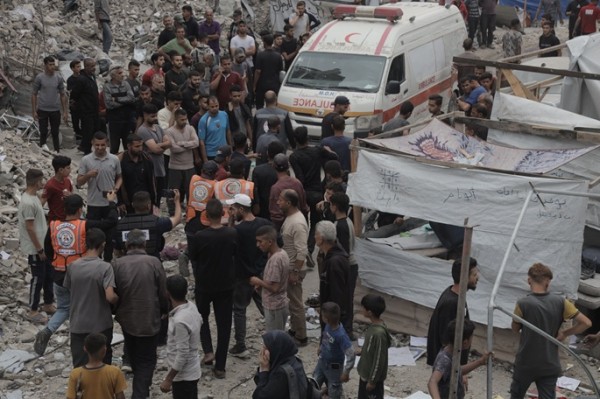
Another 7 percent increase in Israeli displacement orders for Gaza, along with militarized zones, makes 71 percent of the Strip restricted areas for Palestinians, UN humanitarians said on Thursday, reported Xinhua.
The UN Office for the Coordination of Humanitarian Affairs (OCHA) said the displacements with intensified hostilities resulted in further deaths and destruction of civilian infrastructure along with an aid blockade lasting one month and a half.
OCHA said that in addition to ongoing bombardment, another three displacement orders were issued by the Israeli military covering 7 percent of the Gaza Strip's total area. Wednesday's order for six neighborhoods in North Gaza governorate overlaps with parts of the zones covered under Tuesday's displacement orders.
The office said preliminary estimates put the newly impacted area as home to approximately 100,000 people. The displacement order covers 30 sites for internally displaced people, six temporary learning spaces serving approximately 700 students, and several water and sanitation facilities and assets.
"Our humanitarian partners report that several hundred families fled parts of the designated areas yesterday (Wednesday), but dozens of them returned (on Thursday) due to lack of space and shelter," OCHA said. "Another displacement order yesterday was issued for parts of Rimal area of Gaza City."
The office said the latest displacement order affected thousands of residents in 10 Deir al Balah and Khan Younis neighborhoods. An initial assessment indicates the affected area includes eight wells, five reservoirs, seven humanitarian warehouses, three health clinics and other critical facilities.
OCHA said Israeli authorities require humanitarian teams in restricted militarized zones to coordinate their movements. The displacement orders come as populations across Gaza are at risk of famine, and one in every five people faces starvation.
"Israel's full blanket ban on the entry of cargo, including aid and other life-saving supplies, continues to drive hunger and deprivation across the Strip," the humanitarian office said. "OCHA reiterates that the UN and its partners have 9,000 truckloads of vital supplies ready to move into Gaza. More than half of these contain food assistance, months' worth of food for millions of people."
In the face of a reported U.S.-based Gaza Humanitarian Foundation with the apparent approval of Israel to distribute aid in the Strip, OCHA said the United Nations already has a solid and principled operational plan to deliver the humanitarian assistance and life-saving services fairly, at scale and immediately. It said that time is of the essence to prevent further death.
"As long as the full blockade is not immediately lifted, the already limited assistance our partners are able to provide to the most vulnerable groups in Gaza will shrink even further," OCHA said. "The UN and its humanitarian partners on the ground are committed to stay and deliver despite the mounting challenges."
With banning aid beginning March 2, Israel has said the Hamas authorities in the Strip divert substantial amounts of assistance for its use and to distribute among its favored, thereby limiting aid to the general population. UN humanitarians deny the claim.
OCHA said that in addition to the 9,000 truckloads of aid standing by, there are thousands more trucks worth of assistance in the pipeline to follow.
The humanitarian office said Israeli forces hit another school of the UN relief agency for Palestine refugees on Wednesday, this time in Nuseirat area of Deir al Balah that served as a shelter for internally displaced people. No injuries were reported.
OCHA also said the World Health Organization reported evacuating 284 patients and their companions from the European Hospital in Khan Younis to Europe and the United Arab Emirates despite the very challenging conditions. Israeli forces hit the hospital premises twice one day before the scheduled evacuation.
In the West Bank, the humanitarian office reported further killing, displacement and destruction of property.
OCHA said that in Tulkarm and Nur Shams refugee camps in the northern West Bank, demolition of houses and displacement have continued since the issuance of two Israeli military orders in early May to demolish more than 100 structures in the two locations. In Jenin, 200 families have gradually returned to the outskirts of the depopulated Jenin refugee camp.
"This is after they were informed by the Israeli forces through the Palestinian authorities in Jenin that residents of areas adjacent to the Jenin refugee camp would be allowed to return to their homes, which they had been forced to leave nearly a week earlier," OCHA said. "However, 40,000 people are still displaced in the north, unable to return to their communities, and they are receiving support from the local authorities, supported by the UN and its partners."
Source: www.dailyfinland.fi


